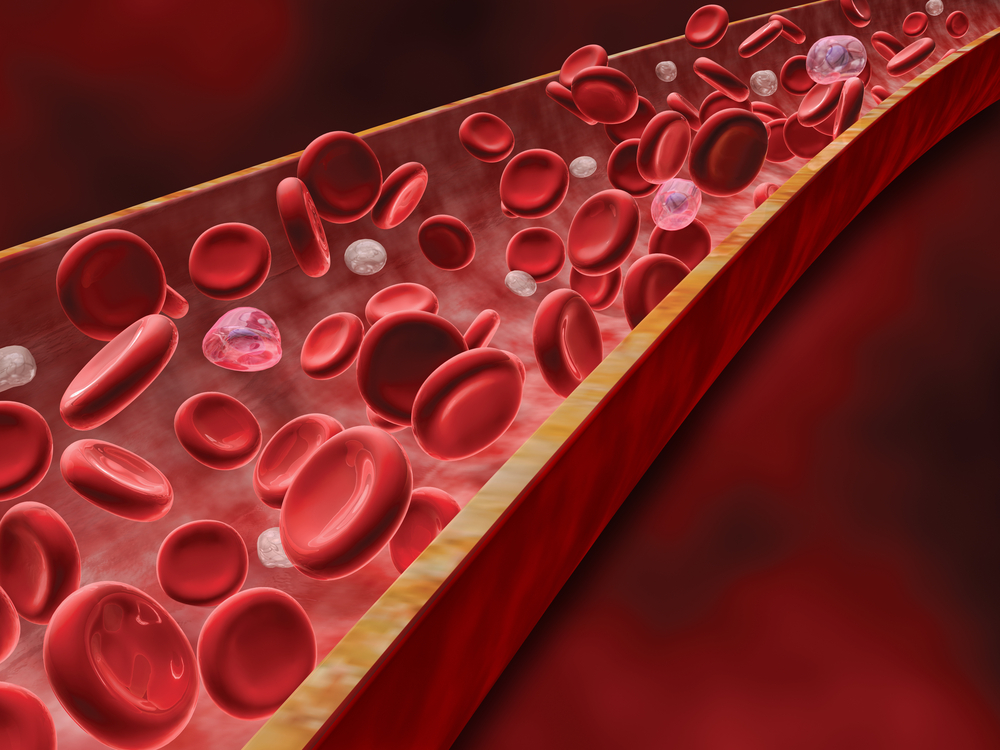Buildup of Oxidized LDLs in Lungs, Plasma Promote PH Progression, Study Shows

The buildup in the lungs and plasma of oxidized low-density lipoproteins, or LDLs — one of the major vehicles for the transport of cholesterol and other types of fatty molecules in the body — is associated with the progression of pulmonary hypertension (PH), a study reports.
However, a small molecule that mimics the benefits of high-density lipoproteins, or HDLs, also known as “good cholesterol,” can stop the development of the disease. This finding supports the therapeutic potential of treating PH with these small molecules, such as 4F, an HDL‐mimetic peptide.
The study, “Involvement of Low-Density Lipoprotein Receptor in the Pathogenesis of Pulmonary Hypertension,” was published in the Journal of the American Heart Association.
Oxidative stress is the process by which potentially harmful reactive oxygen species (ROS), also known as free radicals, form in cells. These molecules can damage several cellular components, particularly fatty molecules (lipids), like LDLs, in a process called lipid oxidation.
LDLs and HDLs are the major platforms for lipid transport in the body, and for that reason, are the main targets for lipid oxidation. Both also have been reported to be dysfunctional in people with PH.
“HDL levels are significantly [reduced] in patients with PH, which is associated with worse clinical outcomes,” the researchers said.
However, the role of the low-density lipoprotein receptor (LDL-R) — the protein that binds to and enables LDLs to enter into cells — in PH is still unclear.
To learn more, a group of researchers at the David Geffen School of Medicine, UCLA, investigated the role of LDL-R in the development of pulmonary hypertension.
The team analyzed transcriptome data from human lung samples of 18 patients with PH and 13 individuals who did not have the disease (controls). The goal was to examine the gene expression levels of LDL-R and another fat transporter called CD36.
The transcriptome is the entire set of gene transcripts — RNA molecules containing information to build proteins — found in a cell or tissue. Gene expression is the process by which information in a gene is synthesized to create a working product, like a protein.
Analyses showed the activity of both genes was significantly lower in the lungs of PH patients compared with the healthy controls. In addition, the researchers found the levels of oxidized LDLs in the blood were higher among those with PH than among those who did not have the disease.
Based on these findings, the investigators hypothesized that a western diet rich in fats could be a trigger for PH in mice who lacked the LDL-R gene — called LDL-R “knock-out” (KO).
To test that possibility, they fed middle-aged LDL-R KO mice for 12 weeks with either a western diet or a control diet low in fats.
The experiment found that animals fed with a western diet developed PH. This was shown by a significant decrease in blood flow speed in the pulmonary artery — the artery that connects the heart to the lungs — of the mice, as measured by the pulmonary artery acceleration time (PAAT) assay (16.1 milliseconds (ms) versus 21.8 ms in controls).
This was correlated with the heart’s right ventricular systolic pressure (RVSP) — a measure of blood pressure inside the pulmonary artery — which was significantly higher among mice fed with the western diet compared with the controls (40.9 mm/Hg versus 29.2 mm/Hg).
LDL-R KO mice fed with a western diet also showed additional signs of PH, including right ventricle enlargement, and a decrease in the ejection fraction of the right and left ventricles. Importantly, the researchers found that the development of PH preceded the dysfunction of the heart’s left chamber.
The ventricles are the two lower chambers of the heart, one on each side. The right ventricle pumps blood to the lungs, while the left ventricle pumps blood to the rest of the body. Ejection fraction measures how much blood the heart’s ventricle pumps out with each contraction.
Animals fed with a western diet also had alterations in lung blood vessels, tissue scarring, lung inflammation, and lipid accumulation in the lungs and heart leading to atherosclerosis, a condition in which arteries become narrower due to fat build-up.
The investigators confirmed these results in lung samples of IPF patients, which also showed increased deposits of oxidized LDL and inflammation compared with control subjects.
Treatment with the HDL‐mimetic peptide 4F — which targets oxidized lipids and reduces oxidative stress — was found to have therapeutic potential in these animals.
When given to LDL-R KO mice that had been fed with a western diet, it prevented the development of PH and right ventricle dysfunction. The peptide also had a therapeutic effect in preventing inflammation and lipid accumulation in the animals’ lungs and hearts.
“Human PH is associated with decreased LDL-R in lungs and increased oxidized LDL in lungs and plasma,” the researchers said.
“HDL mimetic peptide 4F prevented the development of PH and RV dysfunction,” they added.
These findings support the potential of treating PH with these small molecules, according to the researchers.
“Targeting oxidized lipids with high-density lipoprotein mimetic peptides is a potential novel therapeutic strategy for treating PH,” they concluded.







